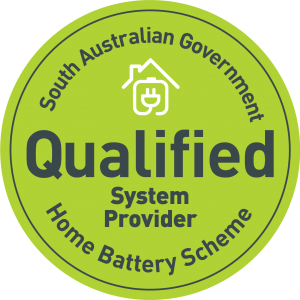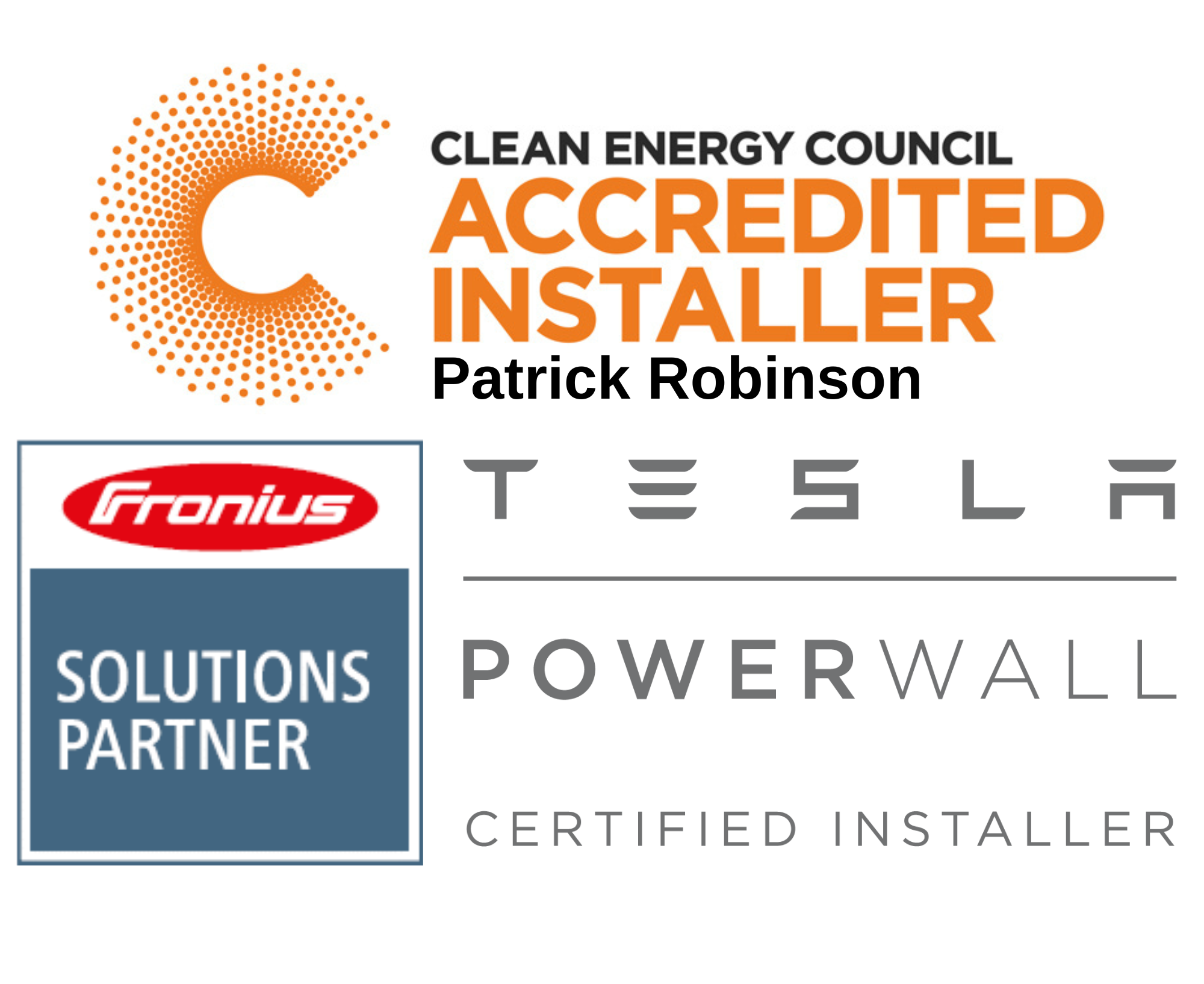Call us now on 1300 130 546 for more information and a quote for Tesla Powerwall2 with a $2700 discount.
Most people are better off financially with a solar system on their house. There is also the added benefit of the ‘feel good factor’. Each person is helping the environment in their own way. But now, you can add a battery to your current solar system. Or, if you haven’t got solar yet, you can sign up for both solar and a battery at the same time. But should you?
There are a few advantages to having a battery, mainly to save money. This is achieved by instead of exporting power to the grid during the day, the solar charges up the battery, allowing you to use the power saved in the evening. This means you buy less power from the grid. In some cases (but not all), if there is a power outage the battery will keep working, so you can still use power. While your neighbours are sitting in candlelight! In some cases, if you have a newer inverter, the inverter will keep working as well. You can potentially keep your power going indefinitely for as long as there is sun!
So, the first question to ask yourself is:
– Why do you want to have a battery?
1 – to still have power in the event of a blackout.
This is a very good reason, but be careful which battery system you buy. Check whether it will give you power in a blackout, or not, not all batteries will do this. Also check whether you can use all the circuits in a blackout, or whether you are going to select a few ‘essential loads’. Also, don’t expect to be able to run your aircon or cooker when you are running on battery only. You will need to use a fan and the barbie instead!
2 – to be able to utilise all the power made during the day, at night, instead of exporting to the grid, thus reducing your bills.
Again, a good reason to have a battery. However, look at your bills over the year and see how much power you actually export per day on average. This is all you can put in to a battery.
3 – to tell your retailer where to go, and not ever have a power bill again
This is not a good reason, you will still need to be connected to the grid. And you will still need to pay the standing charge to your retailer. It is possible to go ‘off grid’, but this is a whole different thing. Not advisable if you live in suburbia and are currently connected to the grid.
Who is a battery best value for?
Any homes where not much power is used during the day, and a reasonable amount of power is exported, work best for batteries. Even if people are home, that is not an issue as long as again, a reasonable amount of power is exported.
Who should think hard as to whether a home battery is worth it?
If your power usage is low, and not much power is used in the evening, you won’t get best value. However, if you are looking for blackout protection, you may still want to invest.
If you are on the old Feed In Tariff, consider very carefully, as you will lose it:
- When you only have a 1.5kw system you probably export virtually nothing. So it may be time to replace your whole system, or add a new solar system by the side. You will need to be able to generate more power to utilise a battery.
- If you have a larger system on the old FIT it may not be worth doing. We recently ran the numbers for an old customer who has a 3.5kw system on the old FIT. Although he was generating enough power to fill the battery, financially he is better off not doing anything. His bills are currently $1000 per year, his new bills with a battery (Tesla in this case), will be $1500 a year.
Home batteries are still relatively expensive, however the local SA government are currently subsiding batteries up to a maximum of $2700, which makes the numbers look much better.
We speak to quite a few people who talk about waiting until batteries are ‘more affordable’ – However we don’t see the price dropping substantially like this, so consider it now.
What can we offer you?
 We are Tesla installers and retailers, so we can offer you a state of the art Powerwall 2 which keeps working when the grid goes down. Our company (PJ Electrical) is also a CEC accredited retailer, plus a member of the SA Home Battery Scheme. This means we can access the battery rebate subsidy (currently $4000). We can also offer you finance through Ratesetter at an extremely competitive rate. We can also offer you a personal service, experienced installers and consultants.
We are Tesla installers and retailers, so we can offer you a state of the art Powerwall 2 which keeps working when the grid goes down. Our company (PJ Electrical) is also a CEC accredited retailer, plus a member of the SA Home Battery Scheme. This means we can access the battery rebate subsidy (currently $4000). We can also offer you finance through Ratesetter at an extremely competitive rate. We can also offer you a personal service, experienced installers and consultants.
If you are interested, we can also offer you access to the Tesla VPP, which reduces the upfront price of your Tesla Powerwall by a further $2000.
Contact us today on 1300 130 546 to get the ball rolling on this.
VPP’s – what are they?
VPP or Virtual Power Plant, is where you sign an agreement, generally with a power company, and allow them to take power out of your battery when they need it. They will pay you for the power they buy. But it may mean you don’t have enough power in the battery when you need it. Usually there is a financial incentive to sign up, so it may be worth running the numbers to see if this is something you want to. There are currently 17 different VPP’s offers in South Australia at last count, and they all work slightly differently.
PROS – your power bills will be reduced from their current level, and you still own a battery. It does generally reduce the upfront cost of a battery as well, so it can be a good way to get a home battery with further discounts. Just check the small print and find out when you can exit the plan if you want you, and find out if there are any exit fees.
CONS – you don’t have control over the power in your battery. So in the event of a blackout you will probably only have a very limited amount of power left to keep you going. Your bills will probably also be higher than if you controlled your battery outright.

